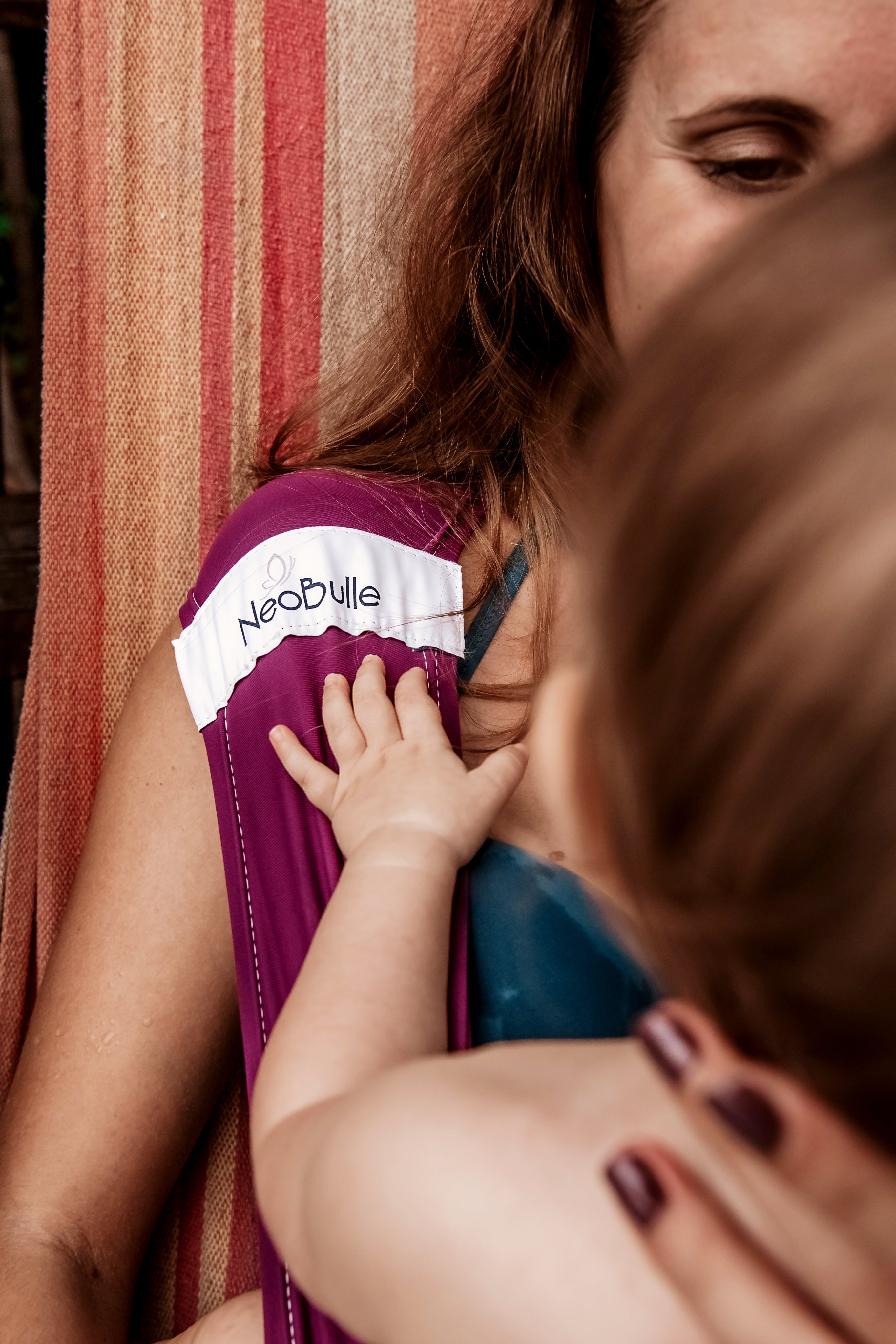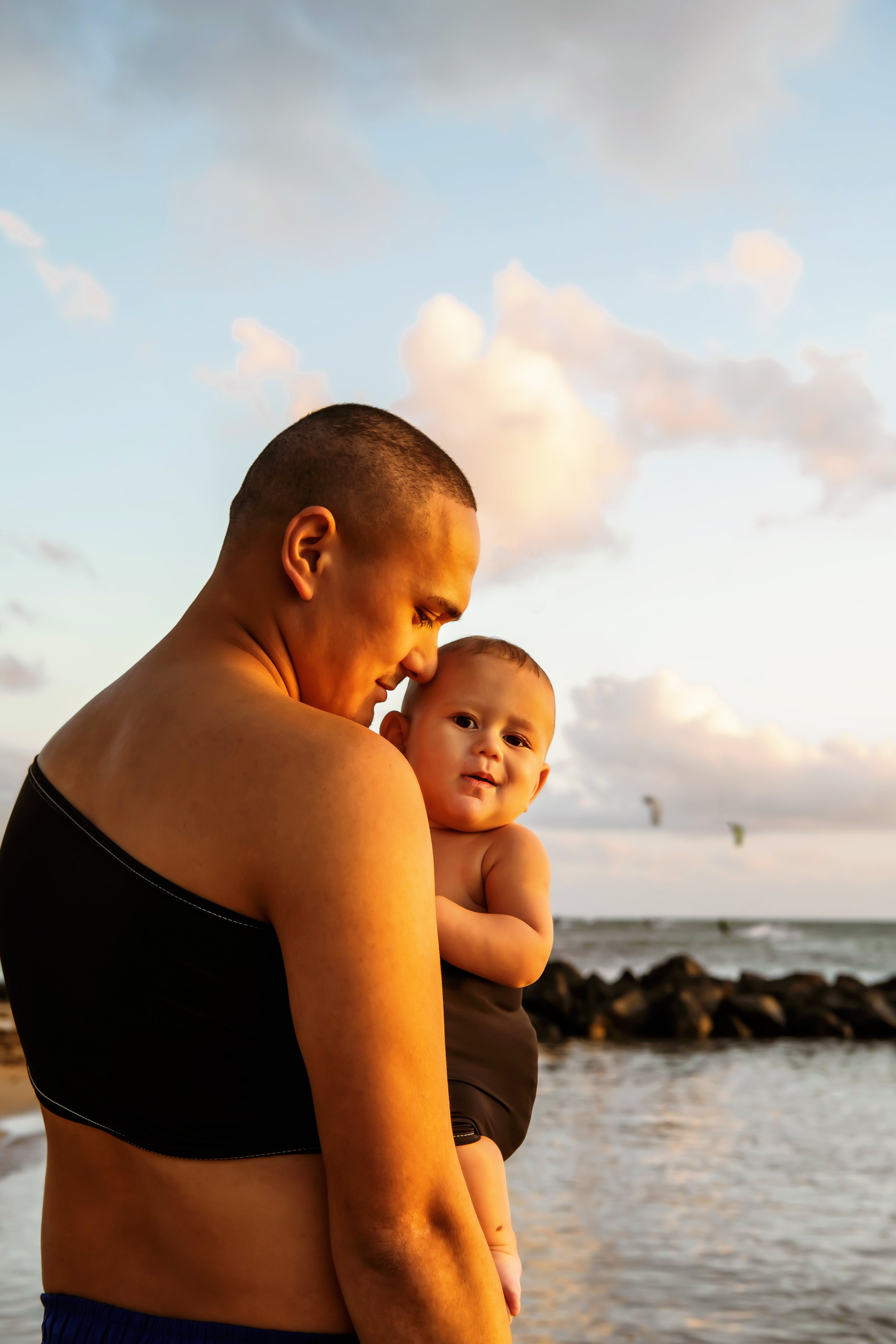Did you just buy a baby carrier and the acronyms dedicated to its maintenance are as obscure to your eyes as hieroglyphs? Your scarf is your only asset to make your baby nap and you don't dare wash it for fear of ruining it (but really, you're going to have to)
This article is for you! We give you all our little tips to pamper your equipment.1 – How often should you wash your equipment?
The question of how frequently to wash is quite common.
First of all, it is highly recommended to wash your baby carrier at reception, before the first use. This first wash is probably the most important:
- Because before it arrives in your hands, the material has been woven, handled, cut, sewn, folded… and once installed inside the baby will love to chew on it!
- Because cotton is a material that needs to be soaked in water (and thus washed) before reaching its final tension.



During the first wash, cotton fibers will saturate with water, swell, then shrink as they dry, allowing the weave to reach a density that guarantees its ultimate integrity: understanding that afterwards the material will be less likely to pucker and deform.
Woven scarves and slings, in particular, are sold to you slightly larger than their actual final size to anticipate the shrinkage inherent in the thread work during this process.
NB: The shrinkage observed during this first wash is around 10%
Are you unsure about the size of your scarf?
We recommend testing the tying method before washing with a cushion, for example, taking this data into account, and only washing it when you are sure that the length suits you. If the scarf is too short or too long, the customer service cannot take it back once it has been washed.
Afterwards, unless the baby has health issues, washing does not need to be too frequent. Sometimes jokingly, it is advised to wash the scarf when it stands up by itself or when the milk-scented fragrance is too strong, but of course, this depends on usage frequency! Have you sweated a lot in it? Does your baby re-gurgitate a lot? Etc…
Washing tends to slightly stiffen the fabric, but like jeans which are more rigid at first, the material re-softens quickly with use. The more spaced out the washes are, the softer and more supple the fabric will stay. So avoid washing your baby carrier every 2 days!
2 – Which washing temperature should you prioritize?
For textiles generally not very dirty, for a carrying system intended for individuals, it’s not necessary to select very high washing temperatures, a wash at 30°C is more than sufficient.
Regarding slings and 100% cotton scarves, although in theory cotton can be washed at 60°C or higher, in practice, washing at too hot and too frequently can prematurely wear out the fibers and cause them to shrink, making the fabric rougher, stiffer, and harder to adjust (which we definitely want to avoid!).
For seacell scarves and My Cocon scarves, both containing viscose, or for the My Neo whose apron is synthetic, washing above 40°C can damage the textile. The same applies to preformed carriers and mei-tai which generally contain foams in combination with the fabric (belt, straps…) and don’t tolerate high temperatures either.
Washing at 30°C is therefore not only sufficient but also helps to optimize the longevity of your baby carrier (and incidentally reduces energy consumption!).
3 – Which detergent should you use?
Regarding detergent, as with anything in contact with your little one, it’s preferable to use an organic detergent. This advice is all the more relevant since babies love to chew on straps!
It’s not necessary to use a fabric softener, as these tend to gunk up the fibers (which is what makes the laundry soft!), making the carrying system harder to adjust.
NB: since the baby carrier isn’t very dirty, there’s no need to use large amounts of detergent.

4 – What about spinning and drying?
Again, there's no need to be rough on your textiles! A gentle spin is enough (max 800 revolutions).
The tumble dryer that heats the fabric (see washing temperature) and can eventually wear out your baby carrier prematurely should be avoided as much as possible. In an emergency, if it must be used (we know what it's like to urgently need your baby carrier!), choose a gentle cycle for delicate laundry.
Generally, the more the fabric is laid flat, the better (we learn to optimize hanging!). Be careful with sun drying, effective but can fade colors!
Tip for preformed baby carriers and Mei-tai: you can hang them on a hanger.
5 – Special cases
For preformed baby carriers with lots of straps and clips, we recommend using a washing bag: this helps prevent the straps from getting caught in the drum (a rare but unpleasant experience!)
Don't have a washing bag? Don't buy one just for this: a pillowcase works just as well.
The material of the straps of the My Neo tends to attract lint from the laundry it is washed with; to avoid this, it is recommended to wash it separately.
Since bamboo viscose is a highly absorbent material, my cocon carriers are generally longer to dry than those in cotton. Nothing serious, but it's good to know in advance!
You're now ready to face drool and vomit with your baby carrier!





